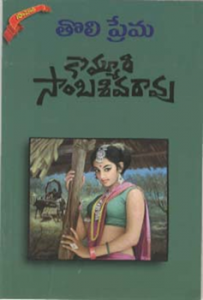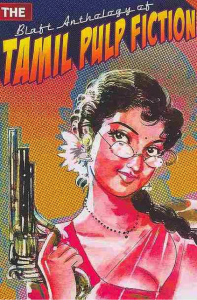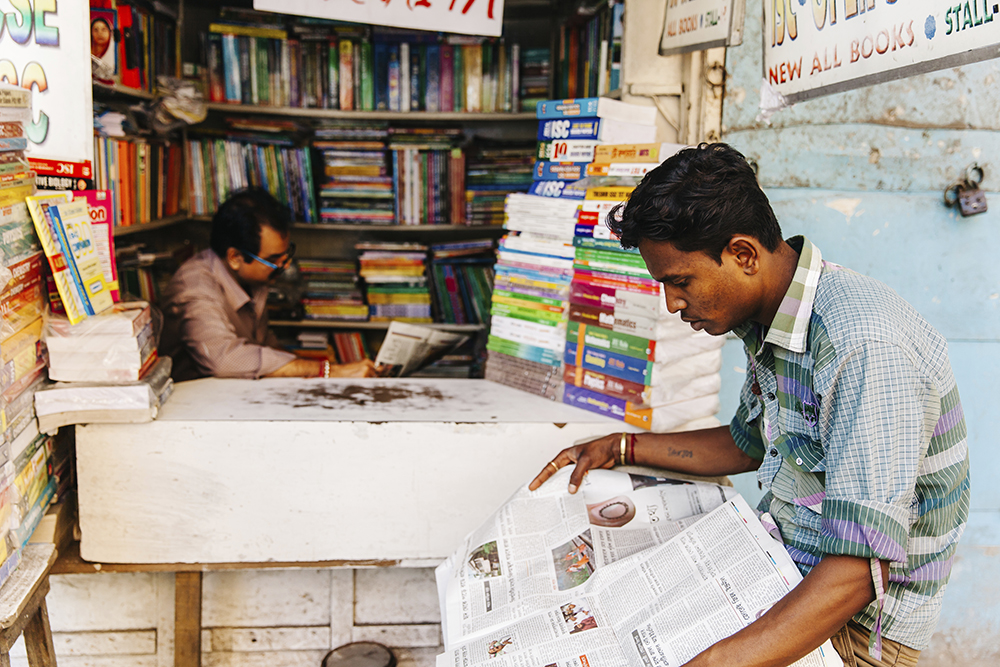The Libraries recently joined a national program to deepen and diversify the national collection for South Asian Studies and focused on a new niche for collection efforts: pulp fiction in South Asian languages.
While the Libraries holds one of the largest and broadest collections of South Asian material in the country, there is also a recognized need to remain active and creative in supporting the sometimes idiosyncratic but always deep research of the scholars at our universities — research that could not be undertaken without unique, international and multilingual collections at their disposal.
Beyond our local needs, however, we also feel the imperative to acquire and preserve materials in US research libraries, lest the ever present dangers of politics, funding and environment threaten them being lost forever — recent news stories of tragic weather events or the destruction of objects from art museums only further drive this point home.
Thus, large research libraries are striving to keep these deep, distinctive collections at the forefront through cooperative collection development initiatives across institutions. In 2014, the Libraries joined a national collaboration for South Asian collections through which librarians across the country seek to leverage existing practices in order to develop simultaneously a robust national collection and unique local collections. There’s a recognition that materials supporting the long-tail of research do not need to be duplicated across many U.S. institutions; rather, harnessing individual skill sets, building upon local interests and working with backroom technical support, the Libraries have concentrated on local niche specializations to develop.
 Recently, Libraries’ collections development staff began exploring a relatively narrowly focused pulp fiction collection that the Libraries can provide in support of this distributed national collection. While on a brief acquisitions trip to India in early 2015, I was able to seek out and acquire a number of popular literature titles in Telugu language (one of the languages we teach here at UT) that would not have been represented in the national collection if I had not picked them up while in Hyderabad. That booksellers were reluctant to sell them to a research library as they are not “proper literature” and are “really for time pass for women” is another story for another time; for now, let’s remind ourselves that approved subjects of research change over time — what was once dismissed (women’s literature, popular culture, and the like) is now hot stuff.
Recently, Libraries’ collections development staff began exploring a relatively narrowly focused pulp fiction collection that the Libraries can provide in support of this distributed national collection. While on a brief acquisitions trip to India in early 2015, I was able to seek out and acquire a number of popular literature titles in Telugu language (one of the languages we teach here at UT) that would not have been represented in the national collection if I had not picked them up while in Hyderabad. That booksellers were reluctant to sell them to a research library as they are not “proper literature” and are “really for time pass for women” is another story for another time; for now, let’s remind ourselves that approved subjects of research change over time — what was once dismissed (women’s literature, popular culture, and the like) is now hot stuff.
The Telugu materials that were chosen for acquisition parallel the pulp detective novels that were prevalent and popular in the American 1930s and 1940s — an era that produced the likes of Dashiell Hammett and Edgar Rice Burroughs. Regional expressions of the genre exist in many South Asian languages; for example, Hindi pulp emerged in the 1950s and became extremely popular — especially as a diversion for train passengers — and remained so until the digital age. Capturing and preserving as many examples of the genre from the region will help us further understand pulp as both a literary movement and cultural documentation.
In light of current trends in scholarship that indicate a growing interest in unconventional or non-traditional subject matter, it only makes sense to focus efforts on collections practices that enhance these underrepresented areas for the benefit of research and casual interest.
 There’s a growing scholarly interest in everyday and popular literature as a venue to explore and understand the production of culture. For examples of efforts in this vein, the work of recent UT graduate Laura Brueck or recent publications such as the Blaft Anthology of Tamil Pulp Fiction. There’s also an increasing recognition and appreciation for the cultural artifactual value of common materials. The covers of recently acquired pulp fiction titles in Telugu are suggestive in many ways — ways common to printed literature everywhere, as a recent library presentation by English professor Janine Barchas suggests.
There’s a growing scholarly interest in everyday and popular literature as a venue to explore and understand the production of culture. For examples of efforts in this vein, the work of recent UT graduate Laura Brueck or recent publications such as the Blaft Anthology of Tamil Pulp Fiction. There’s also an increasing recognition and appreciation for the cultural artifactual value of common materials. The covers of recently acquired pulp fiction titles in Telugu are suggestive in many ways — ways common to printed literature everywhere, as a recent library presentation by English professor Janine Barchas suggests.
The Libraries are excited about this new collecting area and through foreign acquisitions trips in 2016, with plans to develop it in other languages as well, most notably Tamil and Malayalam. Stay tuned to keep watching this unique and distinctive collection grow….


